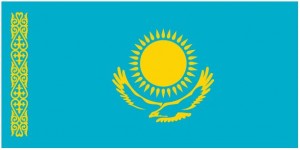Kazakhstan, officially known as the Republic of Kazakhstan, is a country located in Central Asia, with a small part of its territory in Eastern Europe. With a total area of 1,053,000 square miles, Kazakhstan is the world’s ninth largest country by surface and the world’s largest landlocked state. The Asian country is bordered by Russia, China, Kyrgyzstan, Uzbekistan, and Turkmenistan, as well as the Caspian Sea, while its land boundaries are 7,571.41 miles long. According to a July, 2013 estimate the population of Kazakhstan is 17,700,000, making it the 62nd largest country in the world by population. The capital is Astana, while the largest city is Almaty.
Basic History of Kazakhstan
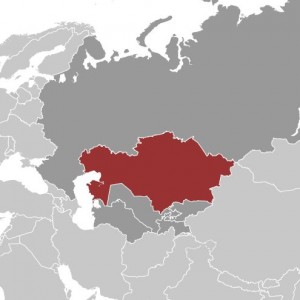 Inhabited since the Neolithic Age, today’s Kazakhstan was established at the Kazakh Khanate in 1456 and starting the 19th century it became part of the Russian Empire. The territory gained autonomy in 1917 after the fall of the Russian Empire, but it became an autonomous republic with the Soviet Union three years later. Kazakhstan was proclaimed a Soviet Socialist Republic in December 1936 and it declared its independence in December 16, 1991, after the dissolution of the Soviet Union. Now a dominant-party unitary presidential state, Kazakhstan is led by president Nursultan Nazarbayev since April 24, 1990.
Inhabited since the Neolithic Age, today’s Kazakhstan was established at the Kazakh Khanate in 1456 and starting the 19th century it became part of the Russian Empire. The territory gained autonomy in 1917 after the fall of the Russian Empire, but it became an autonomous republic with the Soviet Union three years later. Kazakhstan was proclaimed a Soviet Socialist Republic in December 1936 and it declared its independence in December 16, 1991, after the dissolution of the Soviet Union. Now a dominant-party unitary presidential state, Kazakhstan is led by president Nursultan Nazarbayev since April 24, 1990.
Kazakhstan is a member of the United Nations, Organization for Security and Cooperation in Europe, Euro-Atlantic Partnership Council, the Organization of Islamic Cooperation (OIC), the Commonwealth of Independent States, the Economic Cooperation Organization, and the Shanghai Cooperation Organization. In addition, it is an active participant in the North Atlantic Treaty Organization Partnership for Peace program.
[wp_ad_camp_1]
Geography of Kazakhstan
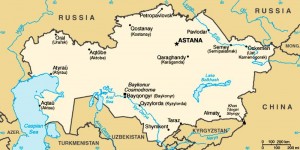 Bordered by Russia to the north and north-east, by China to south-west and by Turkmenistan, Uzbekistan and Kyrgysztan to the south, Kazakhstan is the ninth largest country in the world, with a total area of 1,053,000 square miles (2,727,300 square kilometers), slightly less than four times the size of Texas. In addition, Kazakhstan is also one of the only two landlocked countries in the world lying on two continents. Kazakhstan is divided into 14 provinces, which are subdivided into districts. One third of the country’s territory is occupied by the Kazakh Steppe, which is characterized by large areas of grasslands and sandy regions, while more than three-quarters of the land is either semi-desert or desert with eroded terrain and sand dunes. Kazakhstan’s climate is continental, with warm summers and colder winters. The Republic of Kazakhstan faces several environmental related problems, especially concerning heavily polluted water, industrial pollution, and radiation caused by nuclear tests carried by the Soviet Union in the Semey region.
Bordered by Russia to the north and north-east, by China to south-west and by Turkmenistan, Uzbekistan and Kyrgysztan to the south, Kazakhstan is the ninth largest country in the world, with a total area of 1,053,000 square miles (2,727,300 square kilometers), slightly less than four times the size of Texas. In addition, Kazakhstan is also one of the only two landlocked countries in the world lying on two continents. Kazakhstan is divided into 14 provinces, which are subdivided into districts. One third of the country’s territory is occupied by the Kazakh Steppe, which is characterized by large areas of grasslands and sandy regions, while more than three-quarters of the land is either semi-desert or desert with eroded terrain and sand dunes. Kazakhstan’s climate is continental, with warm summers and colder winters. The Republic of Kazakhstan faces several environmental related problems, especially concerning heavily polluted water, industrial pollution, and radiation caused by nuclear tests carried by the Soviet Union in the Semey region.
Population of Kazakhstan
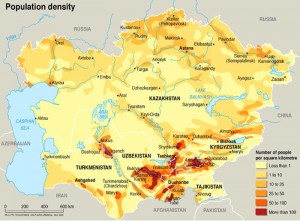 In accordance to a July 2013 estimate provided by the CIA World Factbook, Kazakhstan is home to 17,736,896 people – ranked 61st among the world’s most populous countries. With a density of about 16 people per square mile, Kazakhstan has one of the lowest densities in the world, ranking 225th out of 243 sovereign territories. The country’s growth rate in 2013 is estimated at 1.2 per cent, while birthrate is is 20.03 births/1,000 population. Net migration rate is 0.42 migrant(s)/1,000 population in 2013, sex ratio of total population is 0.92 male(s)/female, and life expectancy is 69.94 years (64.66 years for males and 74.88 years for females).
In accordance to a July 2013 estimate provided by the CIA World Factbook, Kazakhstan is home to 17,736,896 people – ranked 61st among the world’s most populous countries. With a density of about 16 people per square mile, Kazakhstan has one of the lowest densities in the world, ranking 225th out of 243 sovereign territories. The country’s growth rate in 2013 is estimated at 1.2 per cent, while birthrate is is 20.03 births/1,000 population. Net migration rate is 0.42 migrant(s)/1,000 population in 2013, sex ratio of total population is 0.92 male(s)/female, and life expectancy is 69.94 years (64.66 years for males and 74.88 years for females).
The population of Kazakhstan increased from 6.1 million in 1939 to 16.5 million in 1989, and peaked out at about 17 million in 1993. The number of inhabitants declined to 14.9 million in the 1999 census and bottomed out at 14.8 million in 2002. The last census was carried out in 2009 and revealed a population of 16 million, of which 54 percent is urban and 46 percent is rural population. According to several estimated, Kazakhstan’s population will grow to 19.8 million in 2030 and 22.2 million in 2050.
[wp_ad_camp_2]
Largest city in Kazakhstan
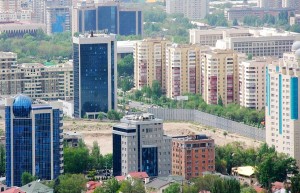 Kazakhstan’s largest city is Almaty. Formerly known as Alma-Ata, Almaty is home to 1,472,866 people (about 9% percent of the nation’s population) and has a density of 11,750 people per square mile. Almaty was the capital city of Kazakhstan from 1929 to 1997, when it lost its status to Astana. To this day, Almaty remains the major commercial and cultural center of Kazakhstan. The country’s second largest city is capital Astana. Formerly known as Akmola until 1998 and Tselinograd until 1992, Astana has an estimated population of 775,800 people and a density of around 2,780 people per square mile. The next most populated cities in Kazakhstan are Shymkent (629,800), Karagandy (459,788), Aktobe (420,778), Taraz (398,223) and Pavlodar (354,809).
Kazakhstan’s largest city is Almaty. Formerly known as Alma-Ata, Almaty is home to 1,472,866 people (about 9% percent of the nation’s population) and has a density of 11,750 people per square mile. Almaty was the capital city of Kazakhstan from 1929 to 1997, when it lost its status to Astana. To this day, Almaty remains the major commercial and cultural center of Kazakhstan. The country’s second largest city is capital Astana. Formerly known as Akmola until 1998 and Tselinograd until 1992, Astana has an estimated population of 775,800 people and a density of around 2,780 people per square mile. The next most populated cities in Kazakhstan are Shymkent (629,800), Karagandy (459,788), Aktobe (420,778), Taraz (398,223) and Pavlodar (354,809).
Ethnicity in Kazakhstan
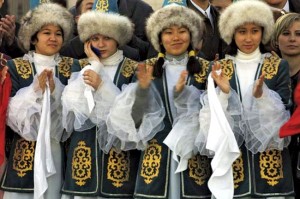 Kazakhstan is home to two dominant ethnic groups, ethnic Kazakhs and ethnic Russians, but more than other 16 minority groups are known to live in the country.The diverse demography is due to its historical use by Russia as a place to send colonists, dissidents, and minority groups from its other frontiers. According to the 2009 census, Kazakhs account for 63.1 percent of the total population, while Russians number 23.7 percent. An important number of Uzbeks – 2.9%, Ukrainians – 2.1%, Uygurs – 1.4%, Tatars – 1.3%, and Germans – 1.1% also live in Kazakhstan. Other minority ethnic groups that inhabit the Asian country are Koreans, Turks, Azeris, Belarusians, Dungans, Kurds, Tajiks, Poles, Chechens and Kyrgyz.
Kazakhstan is home to two dominant ethnic groups, ethnic Kazakhs and ethnic Russians, but more than other 16 minority groups are known to live in the country.The diverse demography is due to its historical use by Russia as a place to send colonists, dissidents, and minority groups from its other frontiers. According to the 2009 census, Kazakhs account for 63.1 percent of the total population, while Russians number 23.7 percent. An important number of Uzbeks – 2.9%, Ukrainians – 2.1%, Uygurs – 1.4%, Tatars – 1.3%, and Germans – 1.1% also live in Kazakhstan. Other minority ethnic groups that inhabit the Asian country are Koreans, Turks, Azeris, Belarusians, Dungans, Kurds, Tajiks, Poles, Chechens and Kyrgyz.
Language in Kazakhstan
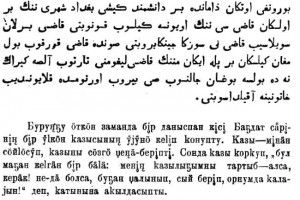 Kazakhstan is known as a bilingual country, with Kazakh as state language and Russian as official language. Kazakh is spoken by 64.4 percent of the population, while Russian, spoken by almost all the country’s inhabitants, is used in everyday business and as the “language of inter-ethnic communication”. Other languages spoken in Kazakhstan are Ukrainian, German, Uzbek, and Tatar just to name a few. English has also increasingly popular among the youth since the dissolution of the Soviet Union.
Kazakhstan is known as a bilingual country, with Kazakh as state language and Russian as official language. Kazakh is spoken by 64.4 percent of the population, while Russian, spoken by almost all the country’s inhabitants, is used in everyday business and as the “language of inter-ethnic communication”. Other languages spoken in Kazakhstan are Ukrainian, German, Uzbek, and Tatar just to name a few. English has also increasingly popular among the youth since the dissolution of the Soviet Union.
Religion in Kazakhstan
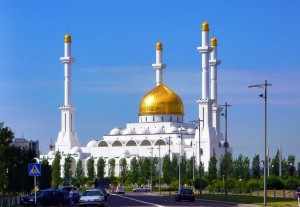 A secular state by constitution, Kazakhstan’s largest religion is Islam, with Muslims accounting for 70 percent of the population according to the 2009 census. 26.6 percent of Kazakhs follow the Christian religion (mostly Russian Orthodox), while 3.4 percent have other beliefs, including Buddhism, Judaism, Baha’i or Hinduism. Some 2.8 percent have declared themselves as Atheists.
A secular state by constitution, Kazakhstan’s largest religion is Islam, with Muslims accounting for 70 percent of the population according to the 2009 census. 26.6 percent of Kazakhs follow the Christian religion (mostly Russian Orthodox), while 3.4 percent have other beliefs, including Buddhism, Judaism, Baha’i or Hinduism. Some 2.8 percent have declared themselves as Atheists.
Economy in Kazakhstan
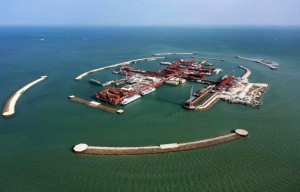 The economy of Kazakhstan is rated as the largest in Central Asia, with the country possessing enormous oil reserves and abounding supplies of uranium, copper and zinc. Kazakhstan is also home to the Baikonur Cosmodrome, the world’s first and largest operational space launch facility. Leased by the Kazakh government to Russia until 2050, Baikonur took over all launches to the International Space Station during the temporary lapse of the United States’ Space Shuttle program after the Columbia Disaster in 2003. Business with booming Russia and China, as well as increased prices on world markets for oil exports have helped Kazakhstan’s economy grow fast since 2000. In 2012, Kazakhstan’s GDP by purchasing power parity (PPP) was of $231.3 billion (53rd in the world), while GDP per capita was $13,900 (96th in the world). It’s estimated that about 5 percent of the country’s population lives below the World Bank’s poverty line.
The economy of Kazakhstan is rated as the largest in Central Asia, with the country possessing enormous oil reserves and abounding supplies of uranium, copper and zinc. Kazakhstan is also home to the Baikonur Cosmodrome, the world’s first and largest operational space launch facility. Leased by the Kazakh government to Russia until 2050, Baikonur took over all launches to the International Space Station during the temporary lapse of the United States’ Space Shuttle program after the Columbia Disaster in 2003. Business with booming Russia and China, as well as increased prices on world markets for oil exports have helped Kazakhstan’s economy grow fast since 2000. In 2012, Kazakhstan’s GDP by purchasing power parity (PPP) was of $231.3 billion (53rd in the world), while GDP per capita was $13,900 (96th in the world). It’s estimated that about 5 percent of the country’s population lives below the World Bank’s poverty line.
Interested in the developing demography of Kazakhstan? Please visit us again soon for updated data including a 2014 estimate of the population as well as a religious map of Kazakhstan.

